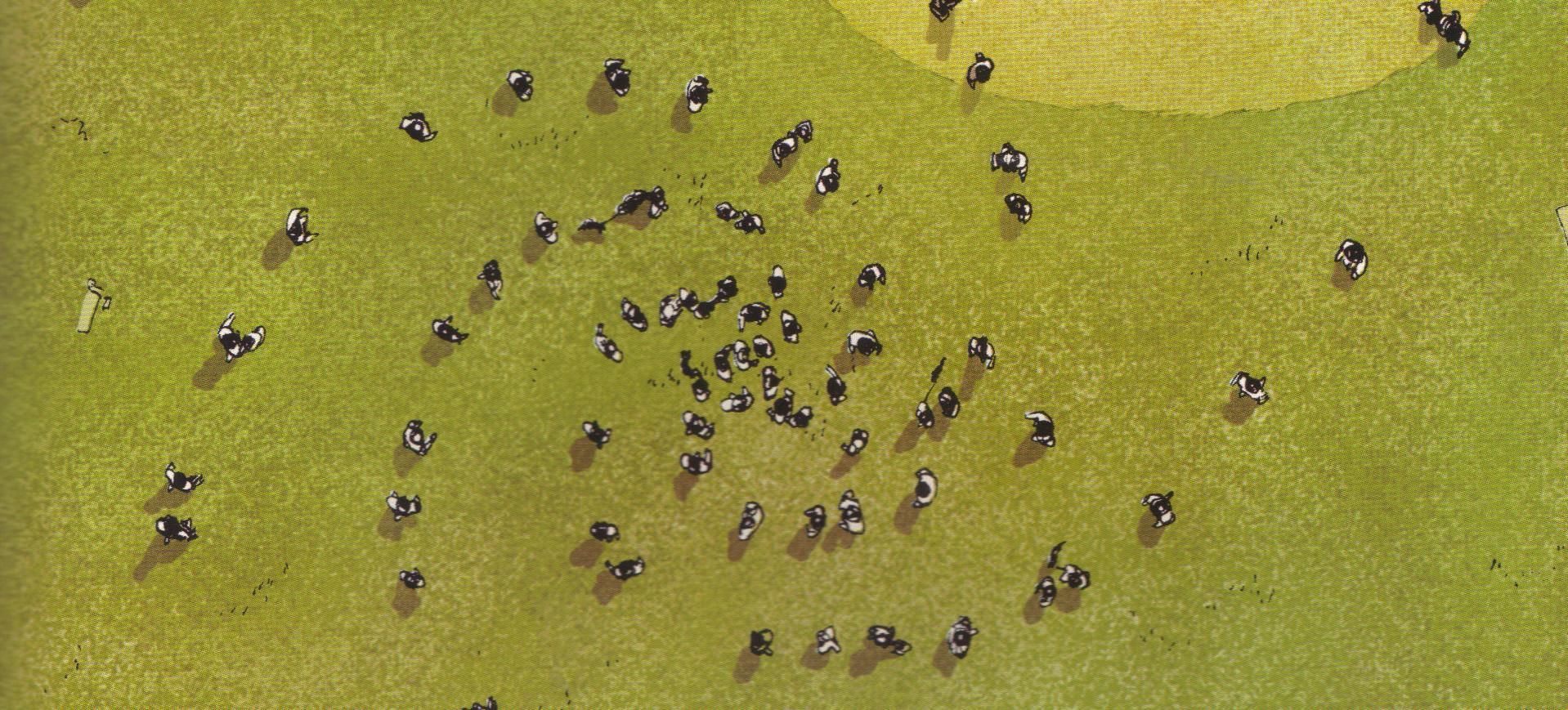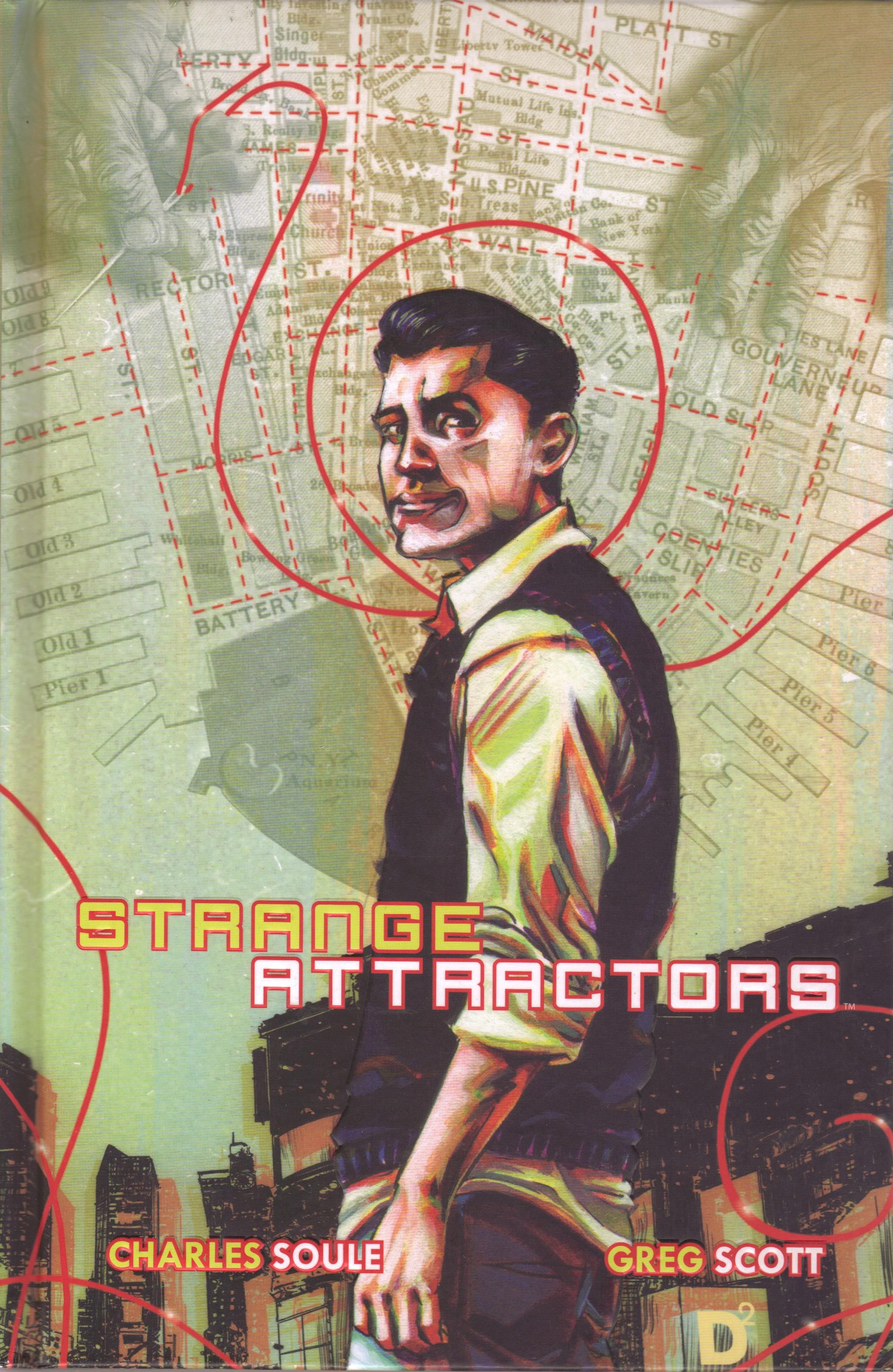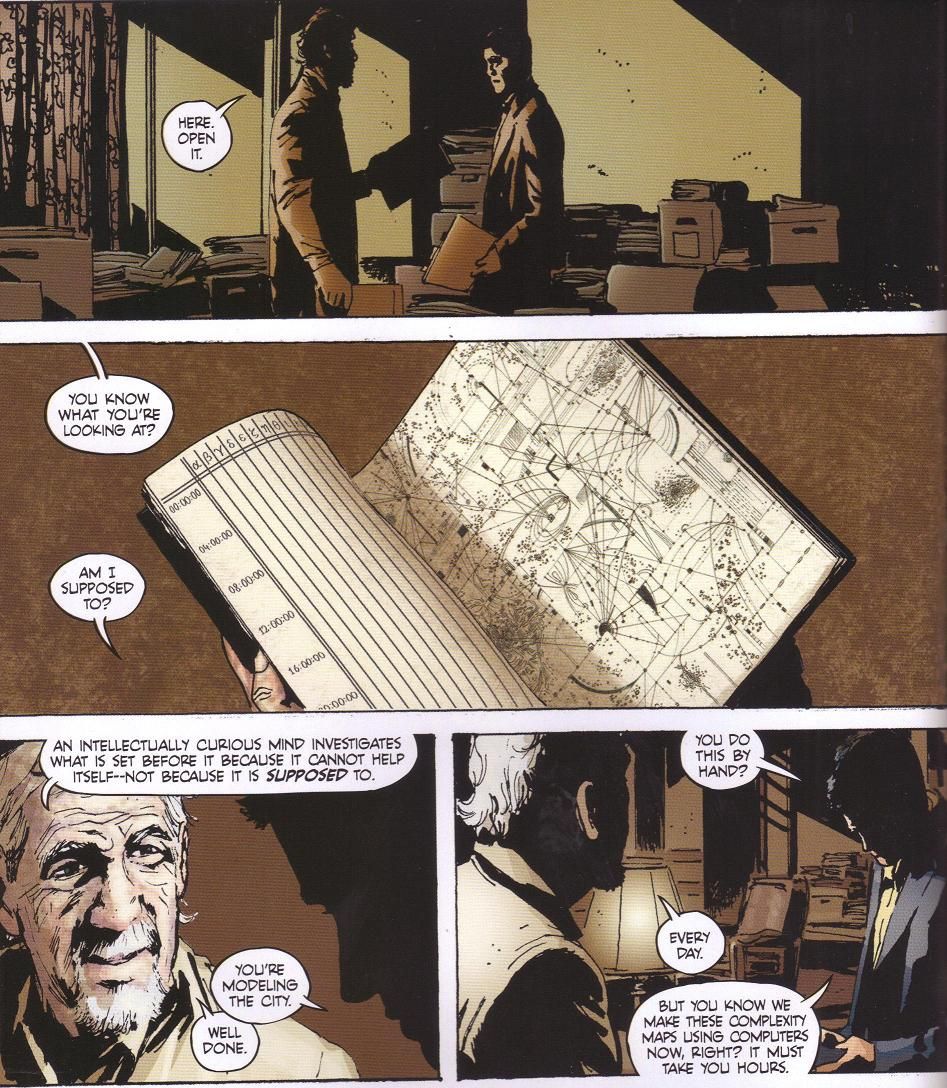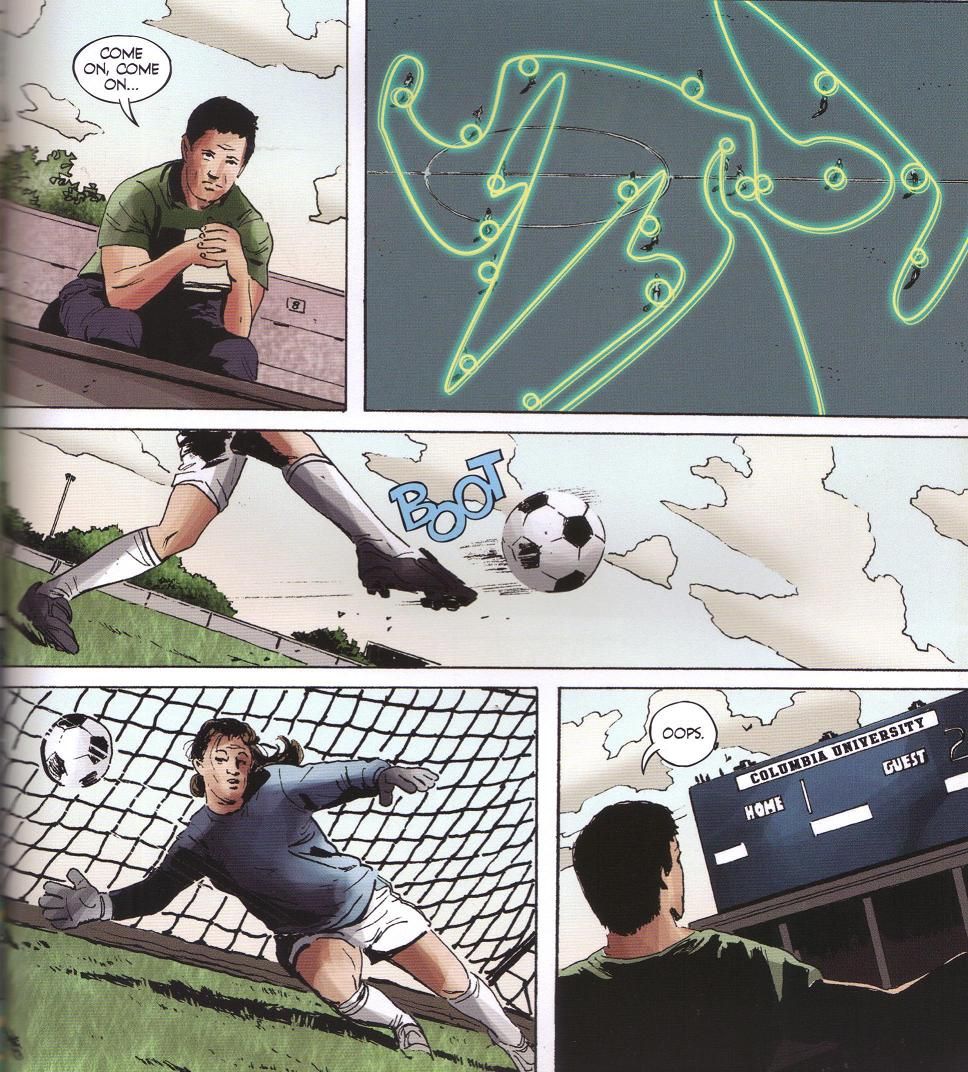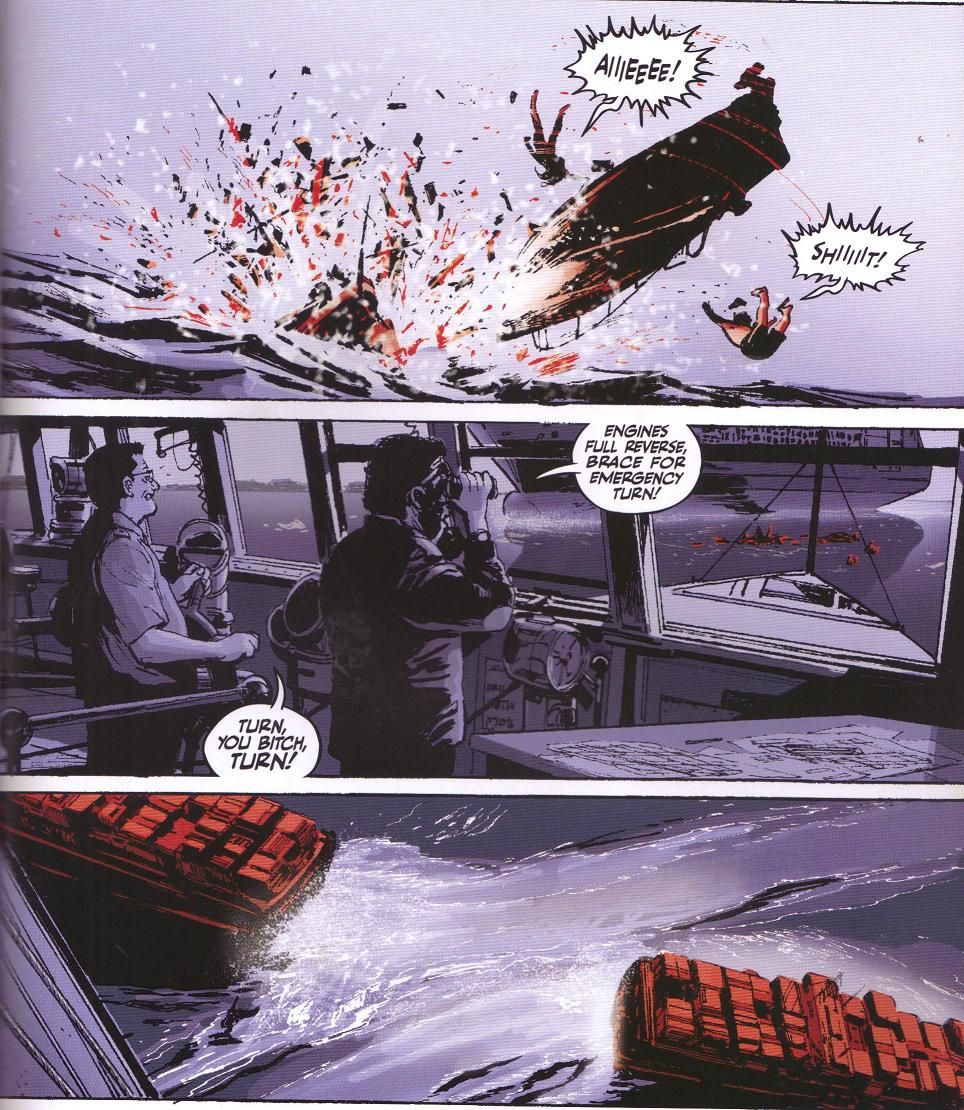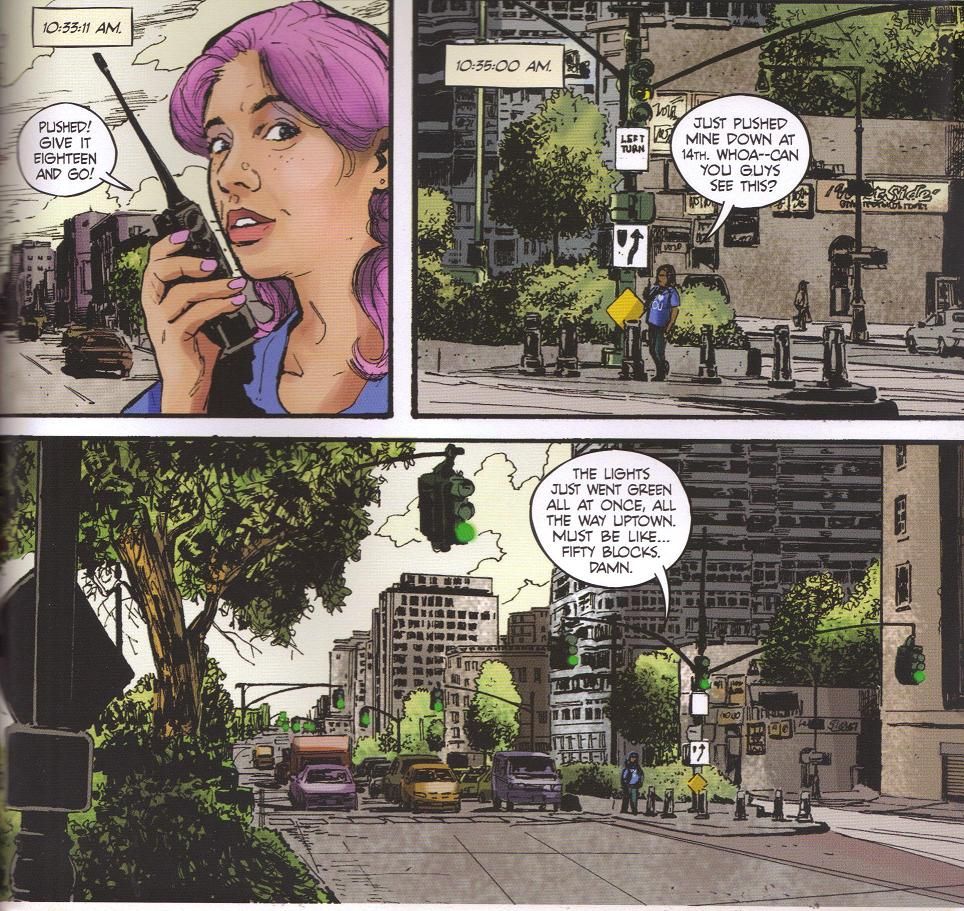Chaos theory in comics! Whoo-hoo!
Charles Soule is getting more press in the comics world these days because he's the new writer on Swamp Thing, but he writes other stuff, too! His new graphic novel from Archaia, Strange Attractors, is pretty darned neat, if you want to read a complete story before deciding whether you want to indulge in his DC work.
Plus, any time you can give money to something beside the Big Two, you should take it!!! Greg Scott drew this, Art Lyon and Matthew Petz colored it, Thomas Mauer lettered it, and Robert Saywitz designed the "complexity maps." As usual with Archaia comics, it's a nicely designed hardcover and it costs 20 dollars.
Ever since I found out about chaos theory, I've been fascinated with it even though my poor, science-illiterate mind can't grasp too much of it. But hey, Mandelbrot sets are cool, right? One of the basic ideas of chaos theory is "sensitive dependence on initial conditions," more commonly called the Butterfly Effect. Yes, like the Ashton Kutcher movie - just deal with it. Now, because we're all a bunch of nerds here, I'm sure that most of you probably know something about the butterfly effect and many of you probably know far more about chaos theory than I will ever know, so this graphic novel should be right up your alley! Soule decides to use the idea of complexity systems and apply it to New York. Hey, it's a complex system, right?
Early on we're introduced to a young man named Philip Jenkins, who's a teaching assistant at Columbia for a Professor Kenowyk. He gives a rambling speech about interconnected systems of New York, then wanders off. He sees the world in a strange way, with everything connected, and he can't handle it, so he throws himself out of a window. After this prologue, we meet Heller Wilson, a graduate student at Columbia, as he tracks down Professor Spencer Brownfield in a diner.
Wilson is studying complexity theory, and he wants some help from Brownfield. The professor offers to help him if Wilson helps him with some minor tasks. Before they leave, Brownfield releases a rat into the diner. He's just that kind of dude.
We meet Wilson's friend, a radio DJ named Tim Hanson, and his girlfriend, Grace, the assistant soccer coach at Columbia. Hanson doesn't think Wilson is very happy in his pursuit of his degree, because Wilson just wants to use it to get a cushy job with a defense contractor. Wilson likes to listen to live music by bar bands, and Hanson accuses him of selling out like so many indie bands of the past. We get some pretty good exposition and characterization in those few pages, and then Soule skips ahead to when Wilson goes to meet Brownfield. The professor has been drawing the complex systems of New York, for what reason he doesn't explain, and he tells Wilson that they need to go out into the city to perform experiments. Wilson's first task is to dump paint outside an entrance to Grand Central Station. Brownfield doesn't tell him why. After a few other odd tasks, Wilson's ready to quit, but Brownfield shows him something that convinces him that the professor can actually manipulate large events by making small changes. So he agrees to stay on.
Soule does a nice job unwinding the story - he takes his time, makes sure he gives us plenty of layers, doesn't forget to foreshadow some dire thing coming down the pike and how odd events conspire to create a situation of drama. According to Brownfield, the city needs to be corrected occasionally, and he is able to see where it needs correcting. Every once in a while, however, something happens that is so big the city needs major correcting. He tells Wilson that he corrected the city in the late 1970s, for instance, and again after 11 September 2001. Now he believes that the city is about to reach a crisis point that may destroy it. He believes he has about four years to solve things, but as this is a thriller, the timetable suddenly moves up and Brownfield realizes that the threat is coming in a few weeks. Meanwhile, Wilson falls deeper and deeper under his spell, and like Philip Jenkins (Wilson wasn't friends with Jenkins, but he knew him), he begins to feel isolated - Grace thinks he's becoming too obsessed with Brownfield, so she leaves him, and when he writes his thesis, Professor Kenowyk tells him that because it's based so much on what Brownfield wrote back in the 1970s, the review board will utterly reject it.
Kenowyk and Brownfield were colleagues, and Kenowyk thinks Brownfield is crazy. Wilson is becoming more and more like Jenkins, but then he discovers something that turns him against Brownfield. It's fairly typical "thriller fare" when we reflect on it, but Soule does a very nice job making Wilson's discovery more powerful than a cliché. It does set up a nice third act, though, in which Wilson has to decide if Brownfield was really crazy or if he was actually onto something.
The writing is quite good in the book - Soule keeps a lot of balls in the air, but he never forgets any character and he makes sure to tie everything together into his grand plot. Even the mayor's marital problems come into the book, which is neat. The scenes between Wilson and Grace, for instance, could have easily become clichéd, but Soule manages to give them both solid personalities that makes their interactions work well even as they find themselves in stereotypical situations, such as when they break up. While a great deal of the book is given over to exposition and plot, Soule still manages to make the characters interesting, so even though they're locked into servicing the grand plot, they don't feel like cardboard characters. That gives the climax a good sense of tension, because while we expect certain things to occur, the fact that Soule has done a nice job creating these characters raises the stakes a bit. In his introduction, Soule writes about how much he loves New York and part of the reason for writing the book is to show this love, and honestly, that's really the only problem I have with the book - Wilson is kind of a douchebag when it comes to New York, dismissing anything that doesn't exist within the confines of the city, because who really cares about that, right? The nice thing about it is that Hanson calls him on it a bit, and his doucheyness is part of his character, so while it's obnoxious, it's not out of right field. Maybe I'm just sick of New Yorkers thinking they're so much better than everyone.
The artwork isn't the strongest part of the book, but Scott's work is probably the best I've seen from him, which is nice. He really doesn't have to do too much - the book is very static, with a lot of characters talking and a lot of streets and buildings of New York that one can easily find on-line or, if you live in the city, take pictures of.
The interesting thing about the art is that Scott just needs to get the basics down, because Lyon and Petz's colors do a lot of the heavy lifting, while Saywitz provides the nifty maps of the complex systems of New York (which he explains in the back of the book). Lyon and Petz use shifts in the palette quite well - when events are occurring that may lead to the destruction of the city, they stick to basic colors to highlight the important stuff in the panel, and it helps us track certain things throughout the comic. When we see how Brownfield, Wilson, and Jenkins see the world, either Scott or the colorists (the indicia gives a breakdown of who colors which page, but I'm not going to go to far into it) adds nice computer effects to show the interconnectedness of things. Scott is probably a pretty good choice for the book, because he's definitely not flashy, so his solid style keeps everything grounded and allows the weirdness that the colorists add to remain isolated and unusual in this basic world.
Soule wisely doesn't get into how Brownfield's actions save the city, mainly because that would get too esoteric and probably pedantic. I was a tiny bit disappointed with the final act that Wilson performs as he tries to stop the destruction of New York, because Soule seems to freight it with more significance than some of the other acts, yet it still doesn't seem to be as important as some other things. But that's just a minor objection to the plot - I dig the fact that Soule gives us some examples of how the butterfly effect can influence things but he doesn't beat us over the head with it. It makes the thriller aspects of the book work much better.
Strange Attractors is a pretty cool comic. It's an unusual thriller that's smarter than most, and it gives us a cool view of New York (and cities in general) as giant organisms that need active participation to stay alive. If you've enjoyed Soule's writing on other stuff, give this a look!

